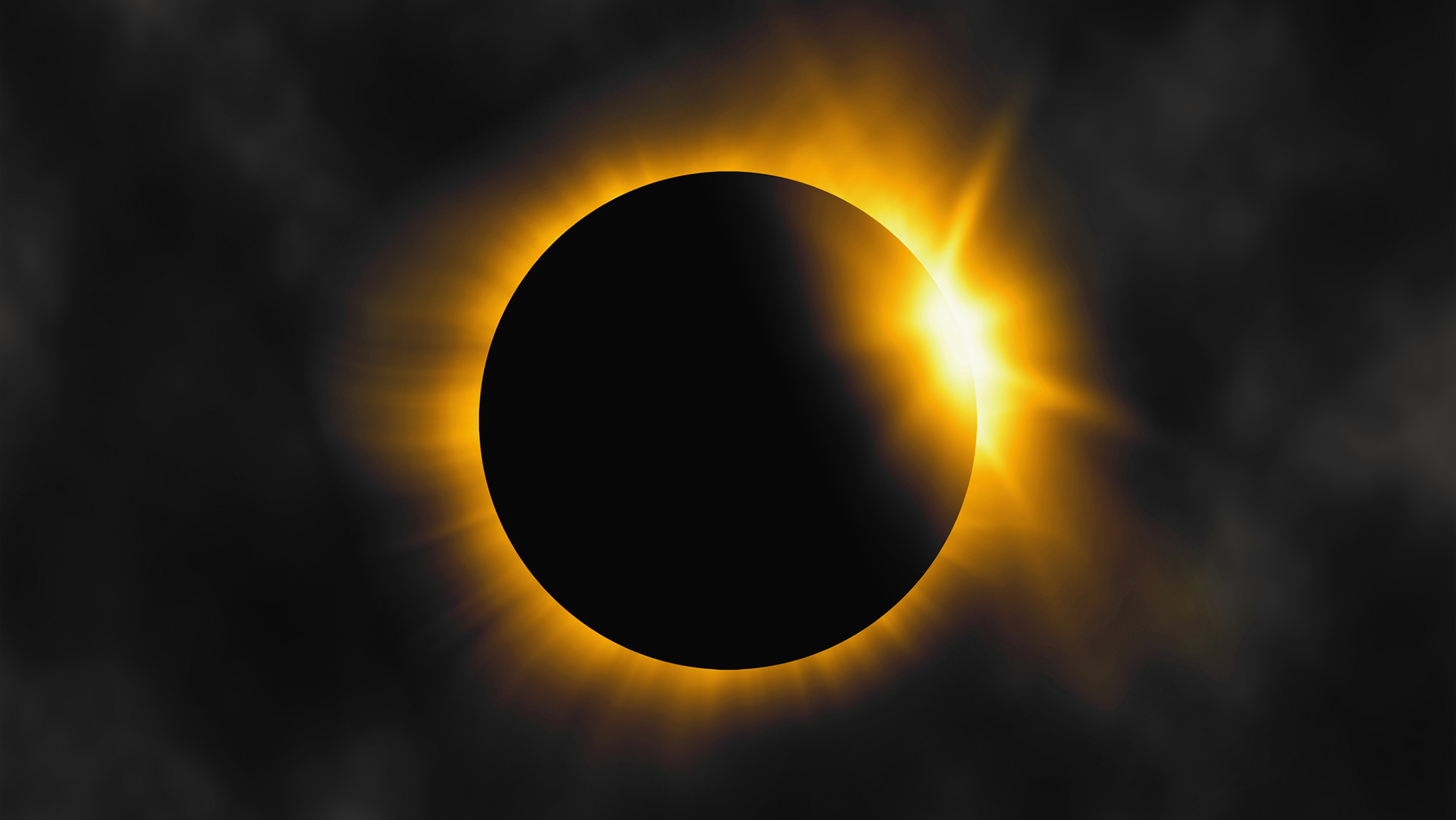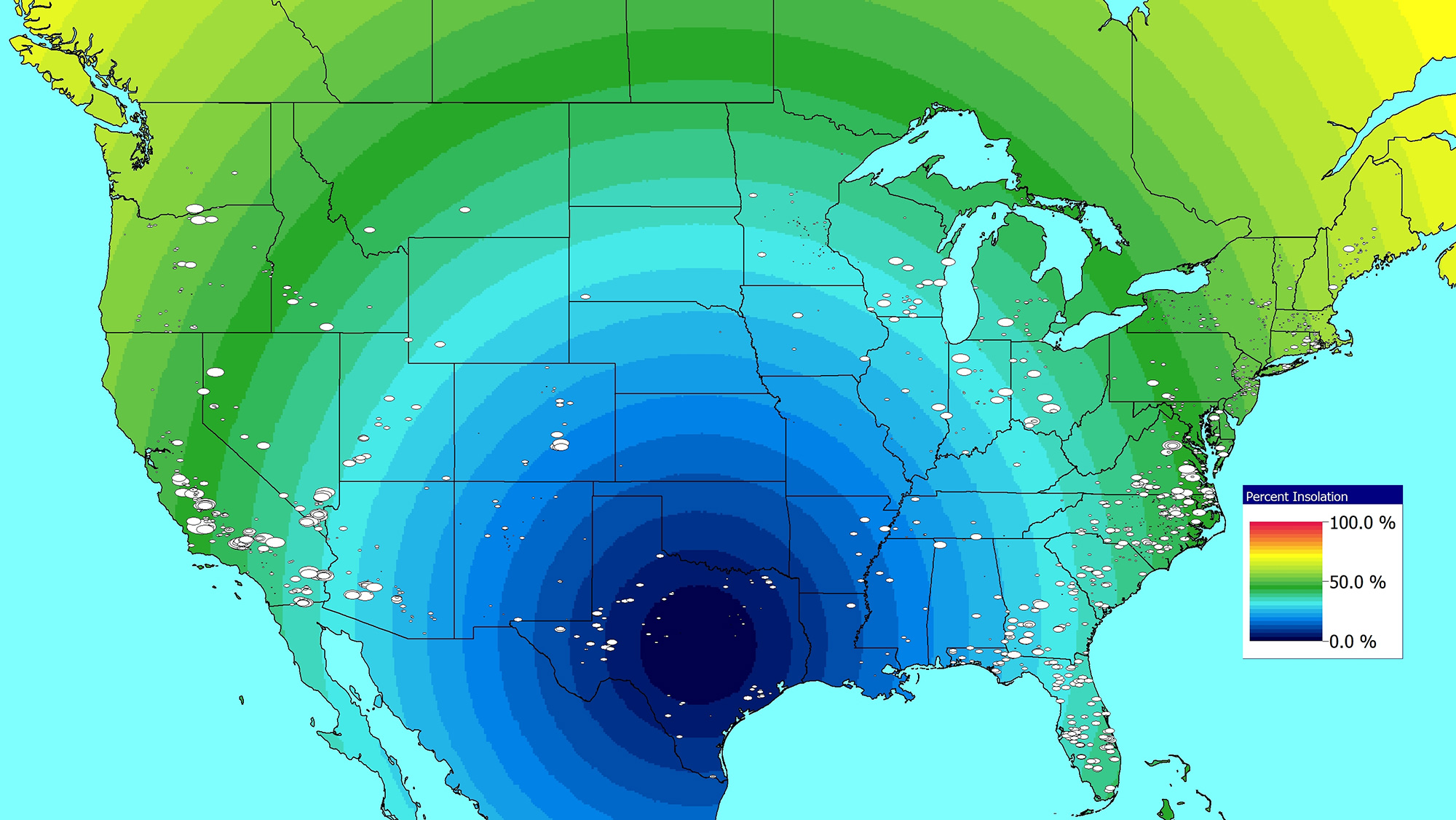
On April 8, the moon will pass between the earth and the sun, and for up to four minutes midday, parts of Texas will be as dark as dusk. The last time this happened in Texas was in 1878.
As the moon moves across the sun, solar generation output will temporarily decrease to zero, leaving some to wonder how the eclipse might affect the power grid. Dr. Thomas Overbye, director of the Smart Grid Center (SGC) and professor in the Department of Electrical and Computer Engineering at Texas A&M University, says the power grid is well-equipped for the total eclipse since other power sources will compensate for the loss and stabilize the grid.
“The eclipse is a well-known, well-planned event,” Overbye said. “We can predict eclipses thousands of years in the future, so it wasn’t catching anyone by surprise. As a result, utility companies will ensure they have enough other generation available. The grid will definitely be impacted, but we’re not expecting any problems.”
Overbye continued to say Texas has some solar power storage, but not enough to compensate for the total decrease in solar output. Around 20% of the decline will come from storage, and the rest will come from alternative power sources.While the eclipse will impact the Texas power grid the most due to its reliance on solar generation, other areas will experience a decrease in solar output as well. The eclipse will be observable across many states in North America, from southwest to northeast.
“It's going to affect the solar generation across most of the country because part of the sun will be covered,” Overbye said. “States that rely on this power, like California and Florida, will also be affected.”

During the eclipse, the temperature may drop a few degrees and birds may start singing. After a few minutes, the sun will come out again, and solar generation will gradually rise to normal.
“If you're in the path of this eclipse, it will be dark like dust,” Overbye said. “It’s going to go through San Antonio, Austin, Waco and Dallas. In College Station, we're going to see the sun mostly covered. It'll be very dark, but there will still be a little bit of sun shining.”
Eclipse glasses are widely available for onlookers to see the moon moving across the sun.
“When that last little bit of solar light goes away, it's pretty profound because suddenly there's no direct sunlight,” he said. “Hopefully, there is good weather to see it.”
Eclipses aren’t the only threat to the power grid. In the electrical and computer engineering department and at the SGC, Overbye and his team analyze unusual events that can affect the grid, such as hurricanes and ice storms.
They also look at renewable resource droughts, which occur when the wind doesn’t blow and clouds cover the sun. By considering these factors, the team can help prepare for the loss of power.
"The SGC focuses on ensuring we have the tools we need to help mitigate rare events and energy droughts," he said. "In Texas, we're leading the country in the percentage of wind and solar on the grid. By far, we have the most renewable generation compared to any other state."
Texas won’t have another total solar eclipse until 2045.
Funding for this research is administered by the Texas A&M Engineering Experiment Station (TEES), the official research agency for Texas A&M Engineering.